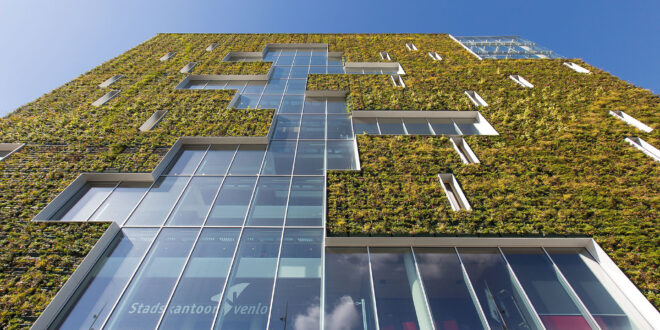With the rise of the “healthy lifestyle” trend, healthy buildings are the latest concept in architecture that’s gaining popularity. A healthy building is specifically designed to promote its occupants’ psychological, physical, and social well-being. The significance of such aspects can not be overlooked or ever emphasized enough to lead a happy life.
Over the last few decades, with the rise of scientific research on human health, people have been trying to make life as comfortable as possible—technology aided in serving this purpose. But the recent focus has been on health-related issues. While lying down on a couch all day is quite comfortable, it is not healthy at all. This gave space for healthy buildings to take on the trend, so the individuals overlooking their healths can lead a healthier life.
Read More: How Do You Clean A Fabric Lounge?
What is the difference between healthy and unhealthy buildings?
The terminology of whether a building is healthy or unhealthy may seem quite an idea, but it does have its grounds. By classifying a building as unhealthy,, the implication is that these structures contain features that can prove detrimental to health. These features can have either short-term or long-term effects. Examples of this include poor ventilation, high humidity, and poor quality of materials.
The downsides of an unhealthy building can never be highlighted as much as they should be. But recent research has linked poor quality materials to conditions like asthma, chronic headaches, fatigue, etc. On the other hand, it has also been proved that buildings affect productivity levels. This makes it evident that even workspaces can be considered healthy or sick.
Why make healthy commercial buildings?
Every building is a small habitat for the individuals living or spending time in that place. Homes, schools, hospitals, and workplaces are the significant buildings where an individual spends most or some part of their time. As mentioned earlier, it is necessary to evade unhealthy environments as they can prove harmful for the lives there.
- For example, residential areas, workspaces, and other commercial buildings need to be created with healthy features since people spend most of their day in their workplaces. For office buildings, it helps increase productivity levels which in turn will help achieve goals. In addition, a high employee yield means more profits. Therefore, office spaces tend to invest in healthy quality features to help aid their business growth.
- Hospitals are places of healing, and thus they need to be as healthy as possible. Decreased patient recovery time and faster newborn advancements are benefits noted in coordination with beneficial building facilities.
- Residents of healthy buildings have significantly lower rates of diseases like nausea and asthma and lower chances of catching viruses due to the clean environment.
- Higher academic scores and attendance have been marked in educational institutes with a cleaner environment. In addition, students are less likely to fall sick and stay highly productive in such environments.
Read More:
The bottom line
Investment in quality living/working standards is a significant step towards a safer and healthier future for humans. Moreover, such buildings result in people living longer and can present a more substantial contribution to society, making it a win-win situation for all.
 HammBurg Be informed with latest news, reviews, entertainment, lifestyle tips, and much more.
HammBurg Be informed with latest news, reviews, entertainment, lifestyle tips, and much more.




